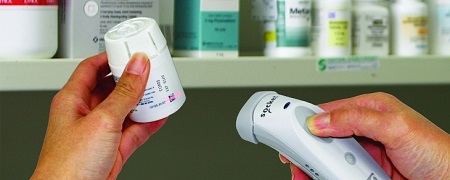Is It the Device or the Network? A New Connectivity Webinar

About the Webinar:
Is It the Device or the Network? Gain real-time visibility into connectivity issues with Extreme Intuitive Insights.
When:
Thursday, October 13th, 2:00 PM – 2:30 PM ET
Presented By:
Paul Zastrow, Sr. Pre/Post Sales Systems Engineer | Barcodes Group
Doug McDonald, Director of Technology | Extreme Networks
Yury Ostrovsky, Senior Product Manager | Extreme Networks
About this Webinar
Connectivity issues with handheld devices plague organizations of all sizes. How do you quickly isolate and proactively flag problems affecting Wi-Fi connectivity, roaming, application performance and voice execution? New cloud-based applications, such as Extreme Intuitive Insights, provide operational insights without the need to chase down physical devices to test and troubleshoot.
This webinar and demonstration will teach you how IT teams:
- Gain visibility into issues caused by the network versus the Zebra devices using the network
- Leverage the cloud to reduce time to analyze with limited staffing and resources
- Identify devices that may have left the facility, been lost, or stolen with Geofencing
Watch the Full Webinar Recording
Grocery Shoppers Are Expecting Three Things. Are You Delivering Them?
Price, convenience, and speed are key trademarks when it comes to current customer expectations. However, positive customer experiences have also become a driving factor in securing customer loyalty and profitability. Studies show that shoppers can spend up to 140%1 more after engaging in a positive shopping experience. On the flipside, negative experiences are more likely to be shared between current and prospective shoppers, impacting brand identity and decreasing sales. While expectations can vary from brand to brand, today’s customers generally anticipate…
- Omnichannel options – Online shopping is most certainly here to stay. It is expected that as much as 70%2 of shoppers in the US will be purchasing groceries online since it serves as both a convenient and safe way to shop.
- Contactless pickup – Similar to online shopping, BOPIS and curbside pickup have also grown in popularity due to their convenience and safety.
- Personalized experiences – Studies show that 43%3 of customers expect some sort of personalized service from stores in response to their loyalty.
What would seamless hassle-free grocery shopping look like?
To surpass these three common expectations, Barcodes, Inc. recommends targeting the following areas within the supply chain.
- Faster shelf replenishment – Simply put, if products aren’t visible on shelves, customers can’t buy them. That’s why quick cycle counting and fast replenishment are crucial to avoid out-of-stocks. Mobile technologies such as Zebra’s touch computers and hands-free scanners can enable real-time inventory updates as associates scan products immediately during stock counts.
- Intelligent point-of-sale – The longer customers wait in line, the less likely they are to return. Faster data capture through devices like Zebra’s enterprise scanners and MP7000 scanner can help accelerate checkout while empowering self-checkout lanes and loyalty scanning.
- Quicker order picking – As associates adapt to accommodate BOPIS transactions, they must move faster and more efficiently to assemble orders within stipulated time frames. Real-time inventory locationing can help reduce pick paths, accelerating order assembly.
Download our solutions brief for more areas of optimization.
While these are optimum areas to start enhancing the grocery storefronts, there are many other ways to deliver seamless shopping experiences. Leverage Barcodes, Inc.’s expertise in developing a smoother shopping experience, equipped with user-friendly technologies that put the customer experience first. Contact us today for a free consultation.
1 The true value of customer experiences. Deloitte. 2018.
2 Djordjevic, Milos. 20 Incredible Online Grocery Shopping Statistics for 2021. Save My Cent. Feb 6, 2021
3 Wollan, Robert et. al. Put Your Trust in Hyper-Relevance. Accenture Strategy. 2017.
Drug Supply Chain Security Act (DSCSA) Mandate
On November 27, 2013, Congress enacted the Drug Quality and Security Act (DQSA), which includes the Drug Supply Chain Security Act (DSCSA). The DSCSA outlines steps to build an electronic system to identify, track and trace certain prescription drugs as they are distributed in the United States. This legislation was enacted in order to transform the pharmaceutical supply chain through serialization and improve patient safety.
Manufacturers, wholesalers, re-packagers and pharmacies have been required to implement lot-level management since 2015. Starting in November 2017, phase II of the DSCSA implementation requires manufacturers and re-packagers to serialize packages of drug products using a GS1 product identifier (either GTIN or NDC), serial number, lot number and expiration date, and embed this information into a 2D Datamatrix barcode. In November 2019, wholesalers must accept only serialized products and must verify unique product identifiers. By November 2020, pharmacists must meet the same requirements. Lastly, by November 2023, all information will be required to be made available that would allow supply chain partners to trace the ownership back to the initial manufacturer or re-packager.
What does a DSCSA solution do?
Our DSCSA hardware and software solution is focused on developing a traceability solution that incorporates transaction management, repository of historical snapshots of data for retrieval, and detects exceptions and provides easy to use visibility to traceability data in a matter of seconds.
What are the benefits of DSCSA?
Besides being in compliance, patients and supply chain companies are able to take advantage of the benefits of DSCSA, such as:
- Improved patient safety and care
- Compliance with serialization requirements helps move the industry ahead with better traceability and accountability for the origin, chain of custody, delivery, and availability of authentic, original prescription drugs
- Improved accessibility to patients for the drugs they need and assurance that they are exactly the drugs prescribed by their physicians
- Reduction of counterfeit drugs by having serialized identifiers
- Maintaining profits for the industry providers against counterfeit products
- Enables quick and accurate recalls of drugs, if needed
- Increased efficiency throughout the supply chain by optimizing inventory tracking through serialization
What do I need to be in compliance?
Converting manufacturing lines from lot-based to unit-based serialization represents an investment in software and hardware. Barcode scanners and barcode label printers are a necessity to print and scan a GS1 2D Datamatrix barcode label. Wireless networking is an option for manufacturers looking to future-proof their operations. While all facilities present different challenges, service providers like Barcodes, Inc. can provide a consultation to ensure all the technology is identified and implemented in accordance to compliance regulations.
While the deadline remains the same, the FDA has issued a one year reprieve, meaning that the agency will not take action against manufacturers who do not affix or imprint the product identifier to their packages until after November 26, 2018.
To learn more about the DSCSA drug tracing mandate or to get a free consultation on a drug tracing hardware and software solution, reach out to one of our Barcodes, Inc. representatives.





